- Author Jason Gerald [email protected].
- Public 2024-01-19 22:11.
- Last modified 2025-01-23 12:04.
Adults usually have a heart rate of around 60-100 beats per minute at rest. Athletes in top shape may have a heart rate of around 40 to 60 beats per minute. People who are in better shape usually have a slower heart rate because their heart beats more efficiently. By calculating your heart rate, you can find out how healthy your heart is and monitor how hard you are working while exercising.
Step
Part 1 of 2: Counting Your Pulses
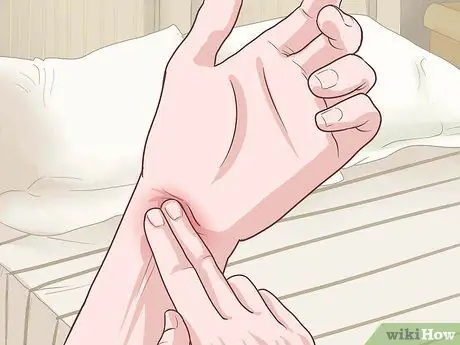
Step 1. Check your pulse on the radial artery
This is one of the easiest places to calculate your heart rate because you have large arteries under the skin. Each time your heart beats, you will feel the pulse as blood flows through your arteries.
- Extend one arm and open your palm up. Gently press the inside of your wrist with your index and middle finger between the bone and muscle near your radial artery.
- This is approximately 1 inch (2.5 cm) below your wrist on the same side as your thumb.
- You should be able to feel the soft tissue under your fingers, not the bone. You may have to move your fingers around or press a little more until you feel it.
- Count the number of beats for 15 seconds and multiply by 4 to get the number of beats per minute. Use the clock to count 15 seconds instead of counting your pulse and time at the same time.

Step 2. Count your pulse under your jaw
This is another location where you should be able to find a strong pulse easily and quickly.
- Place your index and middle fingers to the left of your windpipe where your neck connects with the tissues under your jaw.
- You should be able to feel a pulse on either side of your windpipe. However, it may be easier to find it on the left side. You may have to move your fingers around and press a little more until you feel it.
- Use a clock or timer to count 15 seconds, count the beats you feel, and then multiply by four.
- You should get the same result when you count your pulse at your wrist or neck.

Step 3. See a doctor if you notice any abnormality in your resting heart rate
Your resting heart rate is the number of beats per minute when you haven't been active for at least five minutes. However, if you have just finished exercising, it may take longer to lower your heart rate. A person's resting heart rate usually depends on how active you are, how healthy you are, how warm or cold the air is, your state (standing, sitting, or lying down), your emotional state, your body size, and the medications you are taking. Consult a doctor if:
- Your resting heart rate is usually above 100 beats per minute. This is called tachycardia.
- Your resting heart rate is below 60 beats per minute if you are not an athlete. This is called bradycardia. Other symptoms that may accompany this condition include fainting, dizziness, or shortness of breath. If you are an athlete, a low heart rate may indicate that you are in good shape. However, the heart rate should not be below 40.
- Your heart rate is unusual.
Part 2 of 2: Using Your Pulse to Monitor Your Exercise
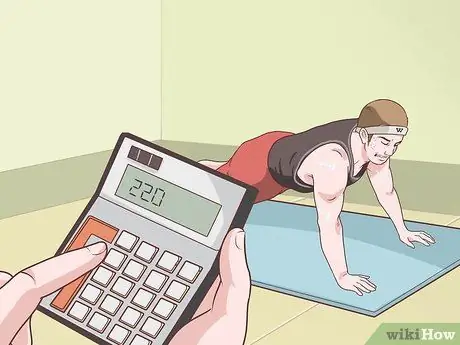
Step 1. Calculate your maximum heart rate
This is the theoretical maximum heart rate your body can handle. The number depends on your age and is used to determine how fast your heart should beat during different levels of difficulty.
- Subtract your age from 220. For example, a person in their 20s should have a heart rate of around 200 beats per minute.
- Some medications for blood pressure may lower your maximum heart rate. If you are on medication for blood pressure and use your heart rate to monitor your exercise, contact your doctor to find out how you should adjust your maximum heart rate.
- Consult your doctor before starting any new exercise routine if you have certain health problems, especially high blood pressure, diabetes, or heart problems.
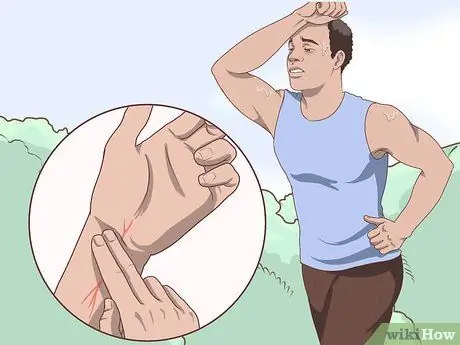
Step 2. Use your pulse to determine when to do moderate-intensity exercise
2.5 hours of moderate-intensity exercise per week should help keep your heart healthy. You are considered to be doing moderate-intensity exercise if:
- Your heart rate is 50-70% of your maximum heart rate. That means that a 20-year-old with a maximum heart rate of 200 beats per minute should have a target heart rate of 100-140 beats per minute during moderate-intensity exercise.
- You dance, climb flat walls, cycle at less than 10 meters per hour, walk at about 3.5 miles per hour (5.5 km per hour), play softball, ski downhill, swim, garden, double play in tennis, or playing golf. This activity should produce a heart rate of around 50-70% of your maximum heart rate. If not, you may have to push yourself a little more to work out harder.
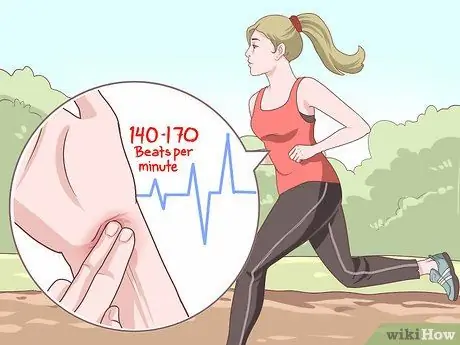
Step 3. Count your pulse to determine when to do high-intensity exercise
Doing high-intensity exercise for 75 minutes per week or more will improve your heart health. You are considered to be engaging in high-intensity exercise when:
- Your heart rate is 70-85% of your maximum heart rate. For someone in their 20s, this rate is around 140-170 beats per minute during high-intensity exercise.
- You walk at 4.5 miles per hour (7 km per hour) or faster, cycle at 10 miles per hour (16 km per hour), climb hills, climb stairs, cross-country skiing, play football, run, jump ropes, playing singles in tennis, playing basketball, or doing heavy court work.

Step 4. Start slowly and as you get stronger you can work out harder and stay within reach of this goal
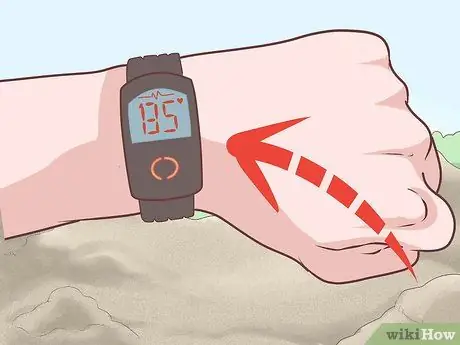
Step 5. Get serious about monitoring your heart rate with a heart rate monitor
If you don't like counting your heart rate while exercising, you can purchase a heart rate monitor.
- Wrap-around wearable heart rate monitors are widely available online or at sports shops. You can buy it and wear it like a watch.
- Most of these monitors have electrodes that you attach to your chest and send information about your pulse to a monitor that is on your wrist. Look for monitors that are easy to use while you exercise. Reading online reviews or talking to sports experts will help you determine which monitor is most practical for your particular sport.






